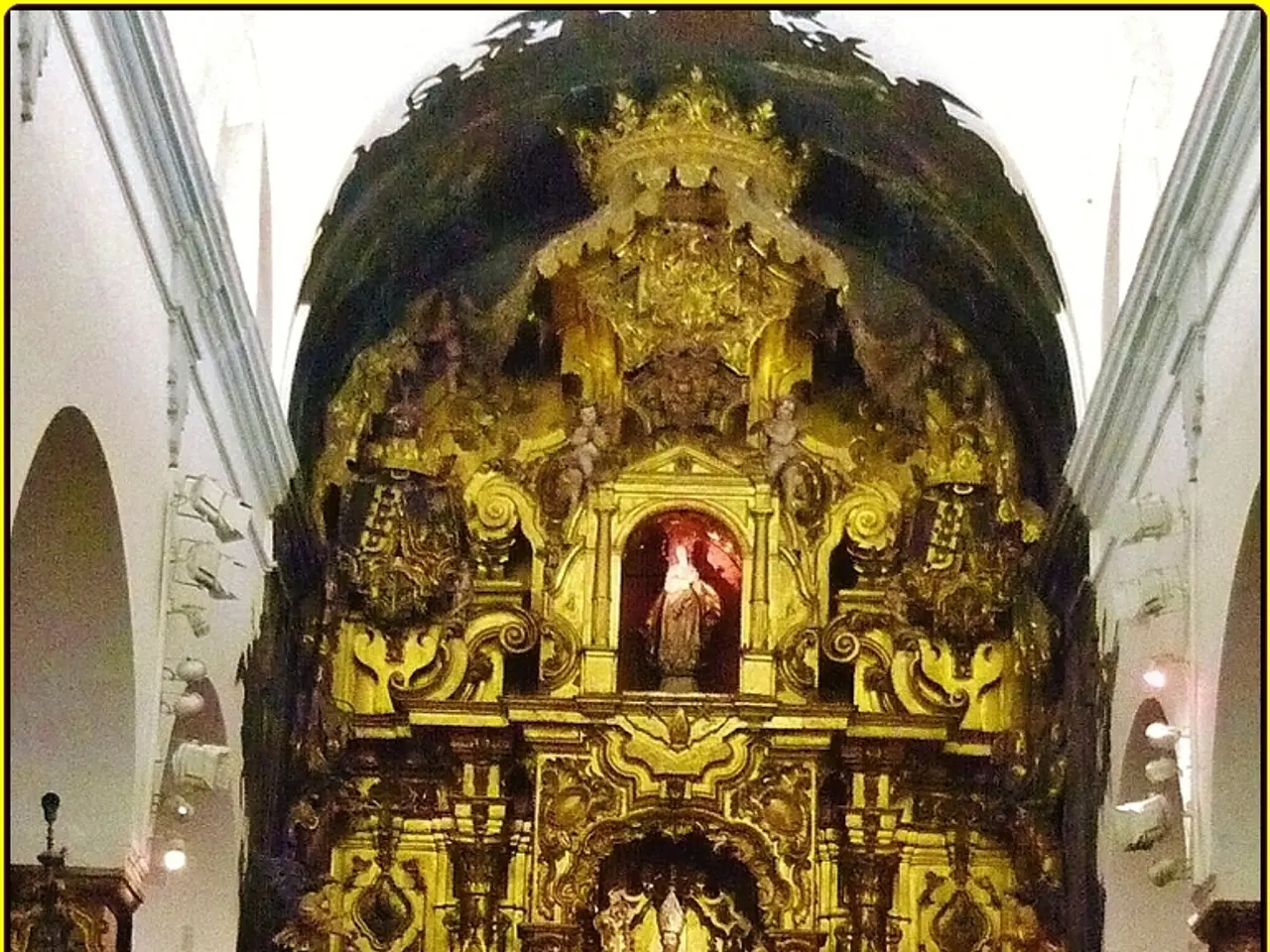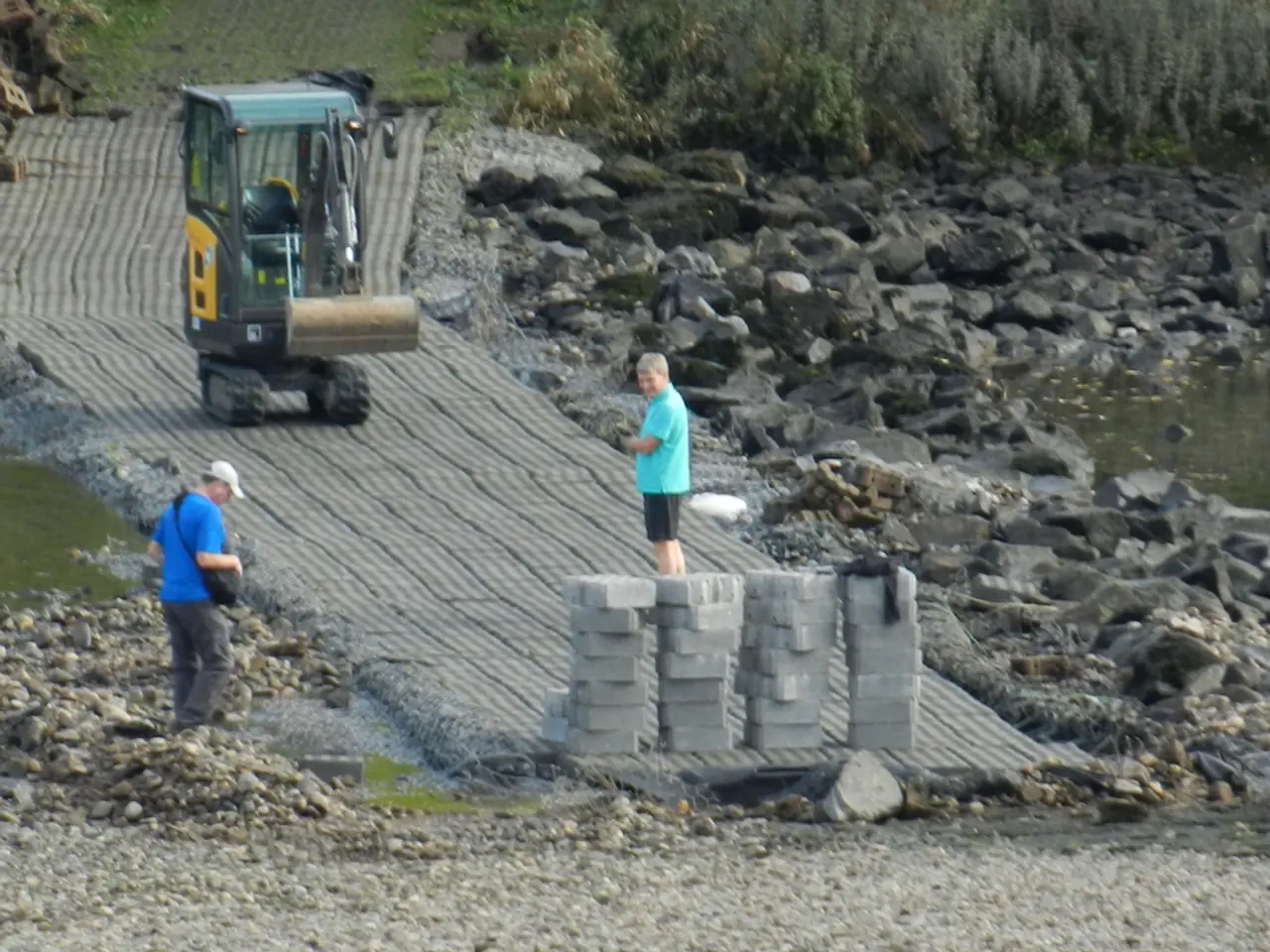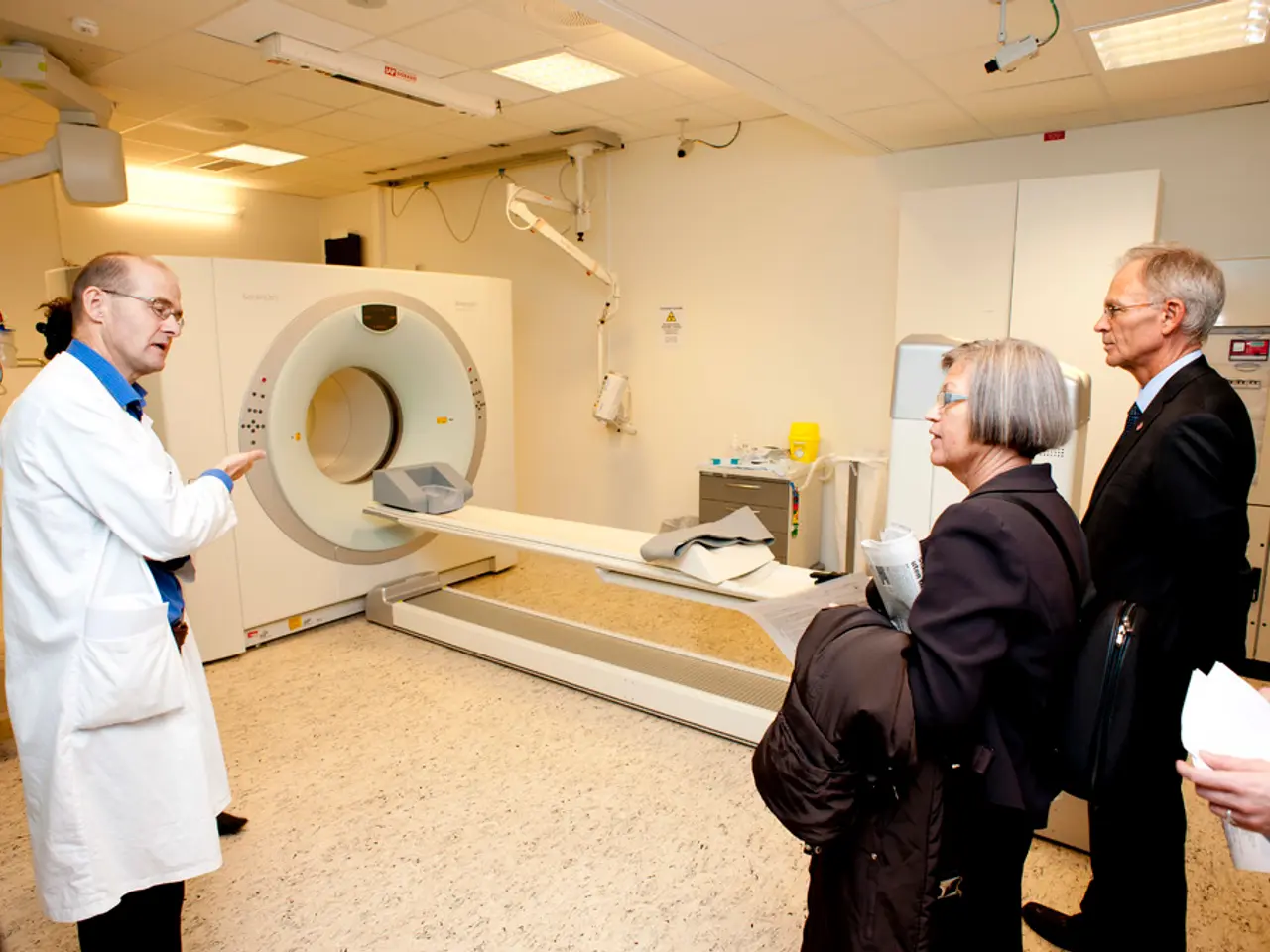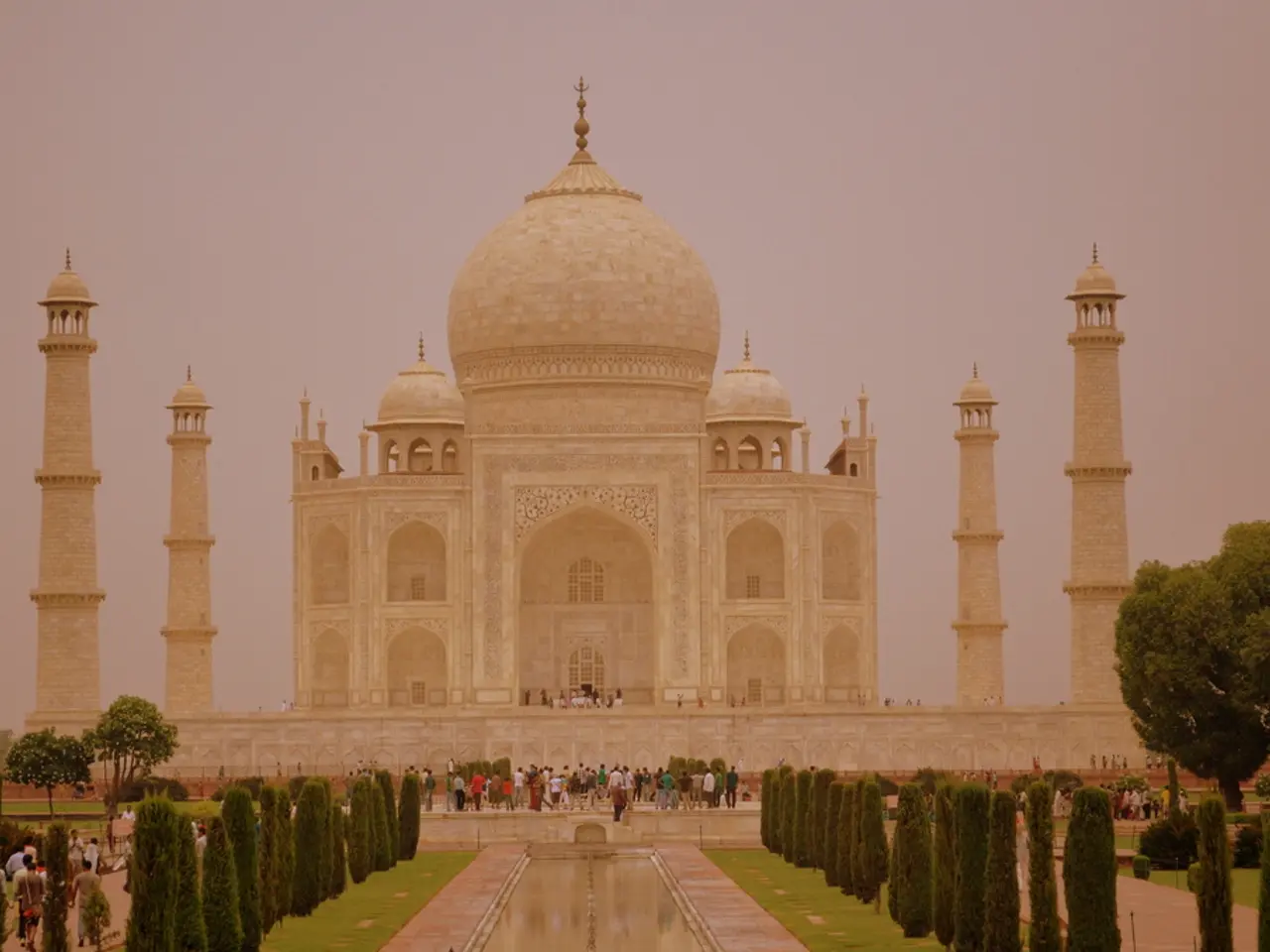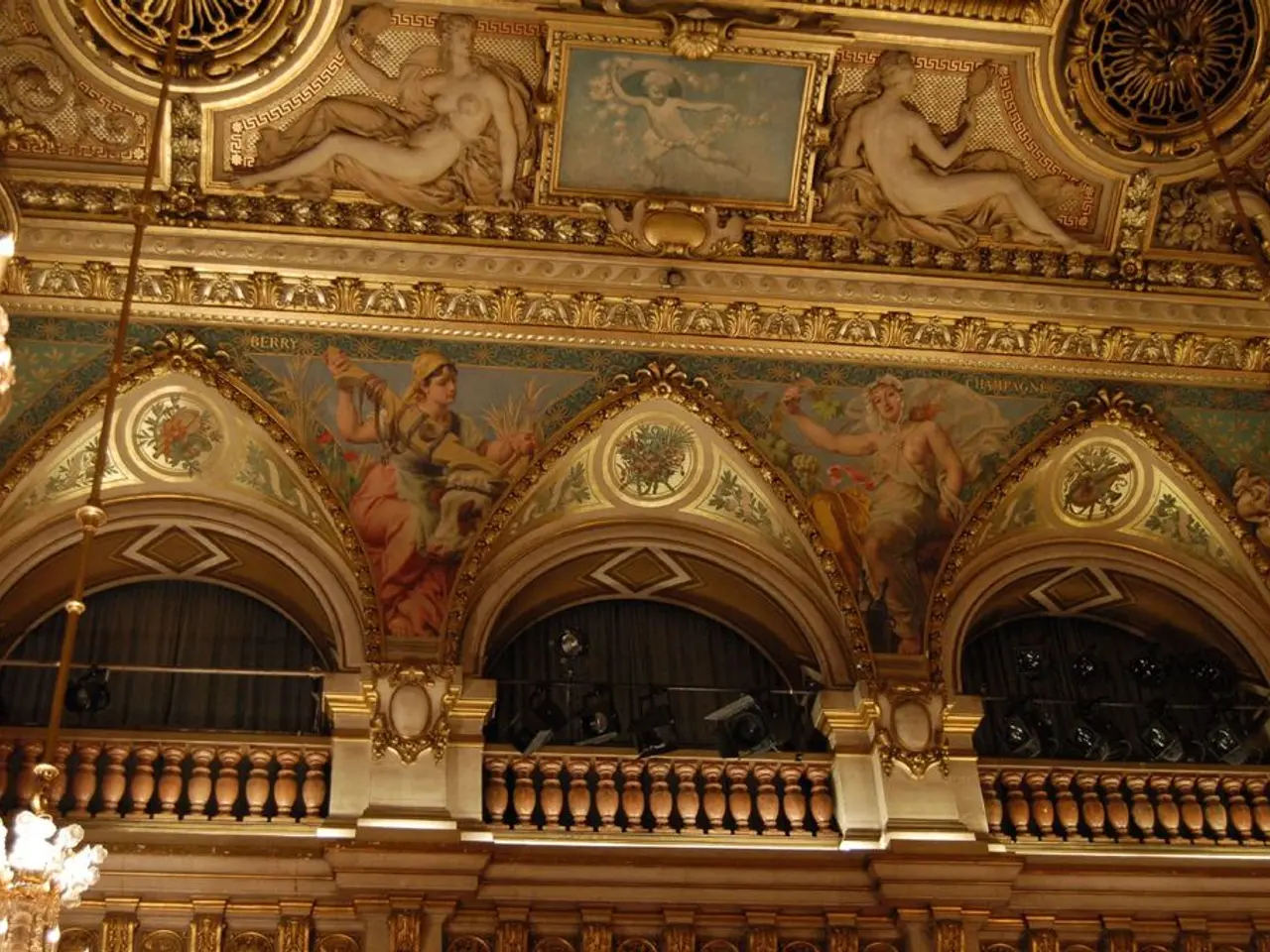White House Cabinet Room undergoes drastic transformation following President Trump's excessive interior redesign efforts
During his tenure, President Donald Trump personally selected artwork and antiques from the White House vaults to redecorate the Cabinet Room, aiming to enhance its historical and aesthetic significance.
One of the notable additions is the portrait, 'Lincoln, the Ever-Sympathetic,' by Stephen Arnold Douglas Volk. This painting was created from a life mask of Lincoln taken by his father, Leonard Volk, in Chicago in April 1860. Another significant piece is a portrait of President James Polk by Alexander Healy, a testament to Polk’s historical importance as the president responsible for acquiring California.
Trump emphasized that the framed artworks were chosen in part because they matched in size and complemented each other visually. He also arranged for the cleaning and polishing of old China, silverware, and trophies from the vaults that had not been maintained for over a century, thus restoring their luster and highlighting their historical value.
The Pedestals in the Cabinet Room are made of mahogany, created around 1805, and the vases are Chinese export Porcelain, created between 1736 and 1795. The Cabinets, made of mesquite and oak, were created in 2008-2009.
The redecorating effort fits within a longstanding White House tradition wherein each administration makes changes to the interiors while respecting the historic character and guidelines managed by the Committee for the Preservation of the White House. Since legislation in 1961, furniture and art in the White House can be designated as historic or of artistic interest and are preserved accordingly.
Trump’s renovations were part of broader efforts during his terms that included other aesthetic changes such as new drapes and curtain rods. His changes to the Cabinet Room and the use of historical artifacts demonstrated an effort to connect the space with presidential legacy and elevate its décor with historic American art.
Notable additions include a copy of the Declaration of Independence installed in the Cabinet room during Trump's term, a bust of George Washington by Hiram Powers, and a bust of Benjamin Franklin by an unidentified artist after Jean-Jacques Caffieri. The painting, 'The Peacemakers,' shows Lincoln gathered with Generals William Tecumseh Sherman and Ulysses S. Grant.
The painting, 'Andrew Jackson,' is by Eliphalet Frazer Andrews after Thomas Sully, while the marble sculpture of George Washington was acquired in 1981. The Girandole Mirror made by Thomas Fentham, gilded wood and glass, was created around 1802. The Wine Coolers made by Wallace Silversmiths are silverplate, created around 1985, and the plates made by Gorham Manufacturing Company are gilded silver, created between 1914 and 1916.
The draperies are gold damask with Greek key trim, created in 2025, and the drapery poles are brass with circular finials, also created in 2025. The sconces made by Cox, Nostrand & Garrison, Inc. are gilded bronze, created around 1934.
Interestingly, President Obama sought to acquire a historic copy of the Declaration of Independence for the White House but found out that it already had one. This underscores the commitment to preserving the historical integrity of the White House, a tradition upheld by each administration.
In summary, Trump's addition of art and antiques to the White House Cabinet Room involved personally choosing historical presidential portraits and restoring old White House artifacts, aligning with presidential traditions of enhancing the historical narrative and decorum of White House interiors.
- The painting, 'The Peacemakers,' depicting Lincoln, General Sherman, and General Grant, adds to the general-news and historical significance of the White House Cabinet Room.
- Trump's redecorating effort, which includes the addition of a copy of the Declaration of Independence, connects the space with policy-and-legislation and the country's political legacy.
- Beyond the Cabinet Room, the news coverage of Trump's overall renovations also highlighted the acquisition of a marble sculpture of George Washington, adding to the war-and-conflicts and politics narrative through the representation of key historical figures.
